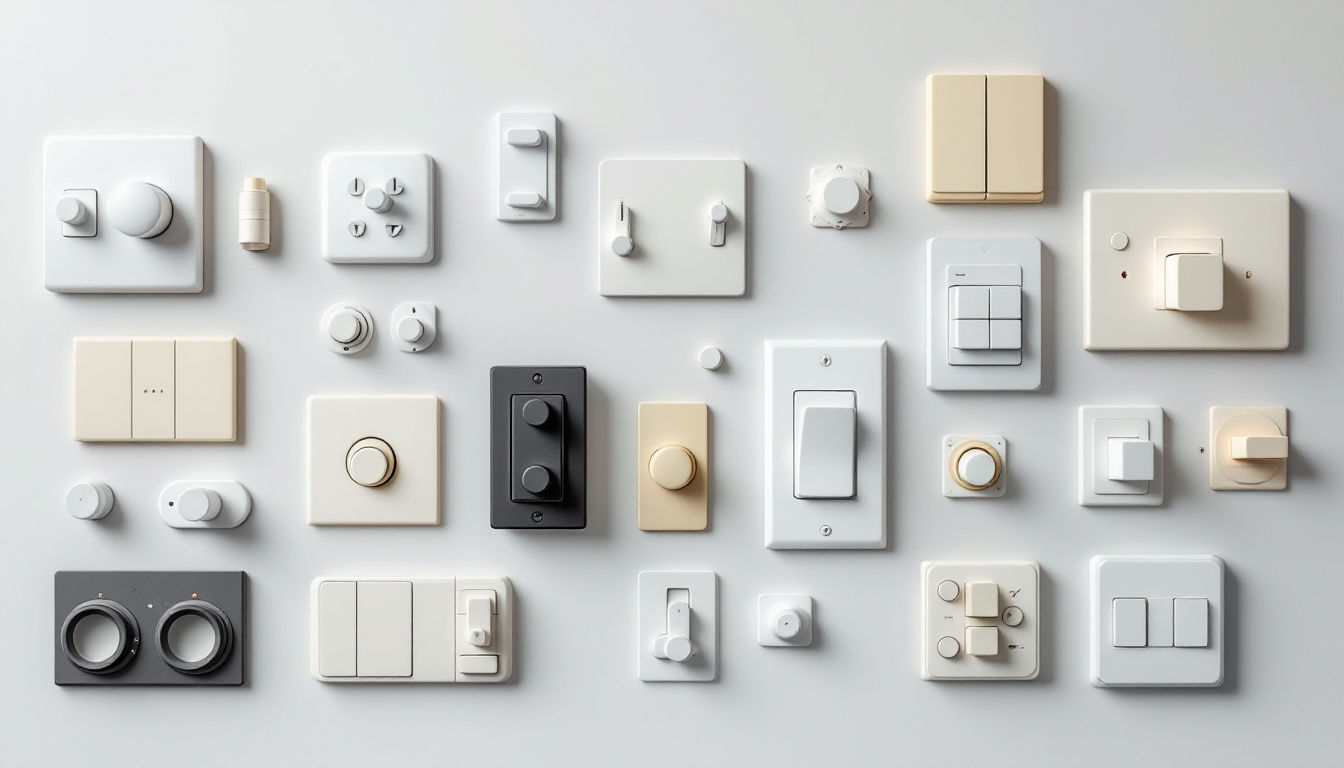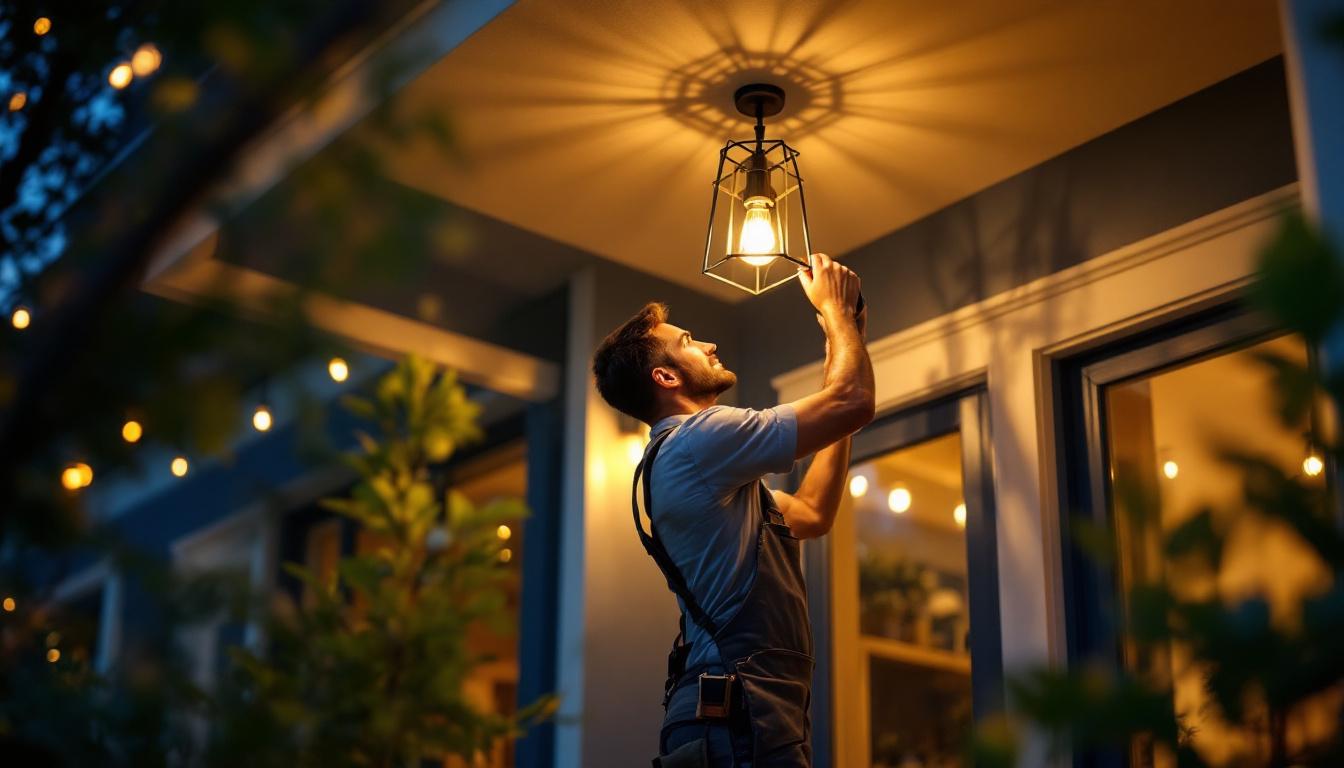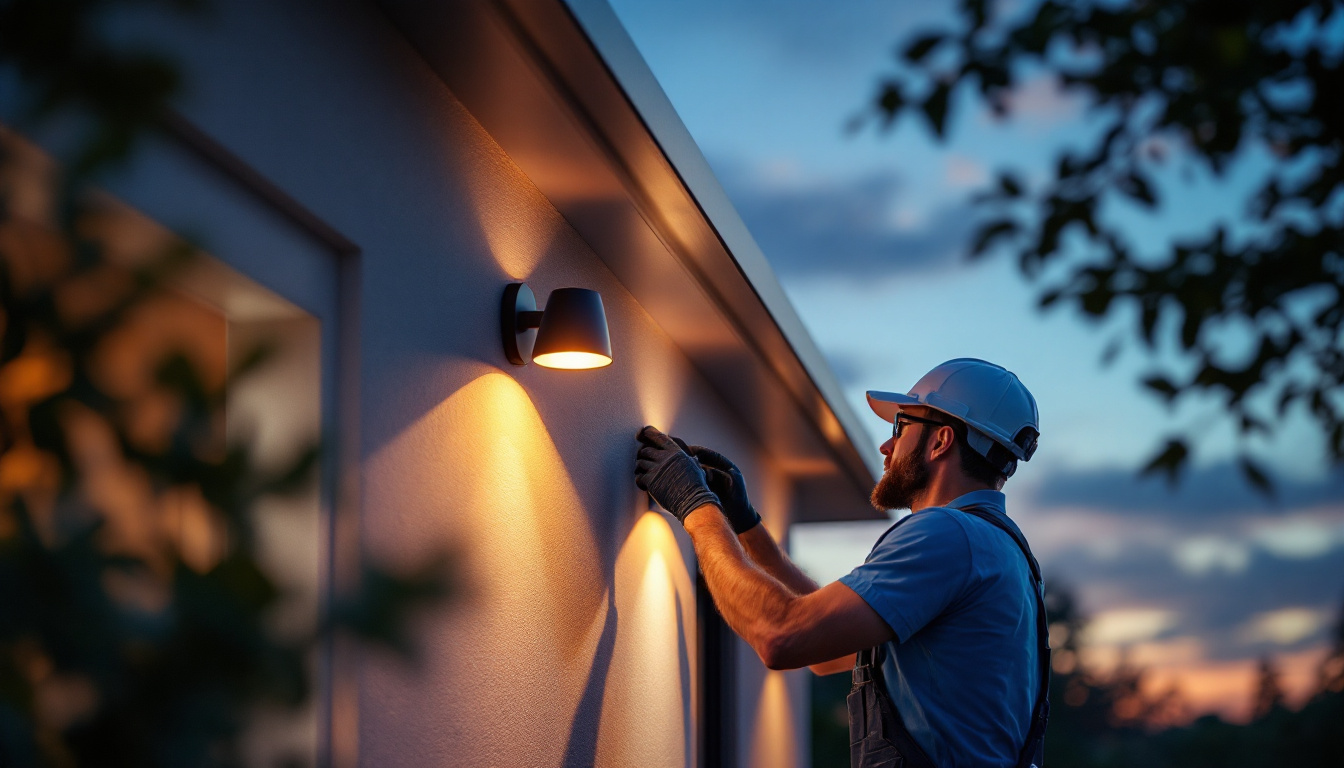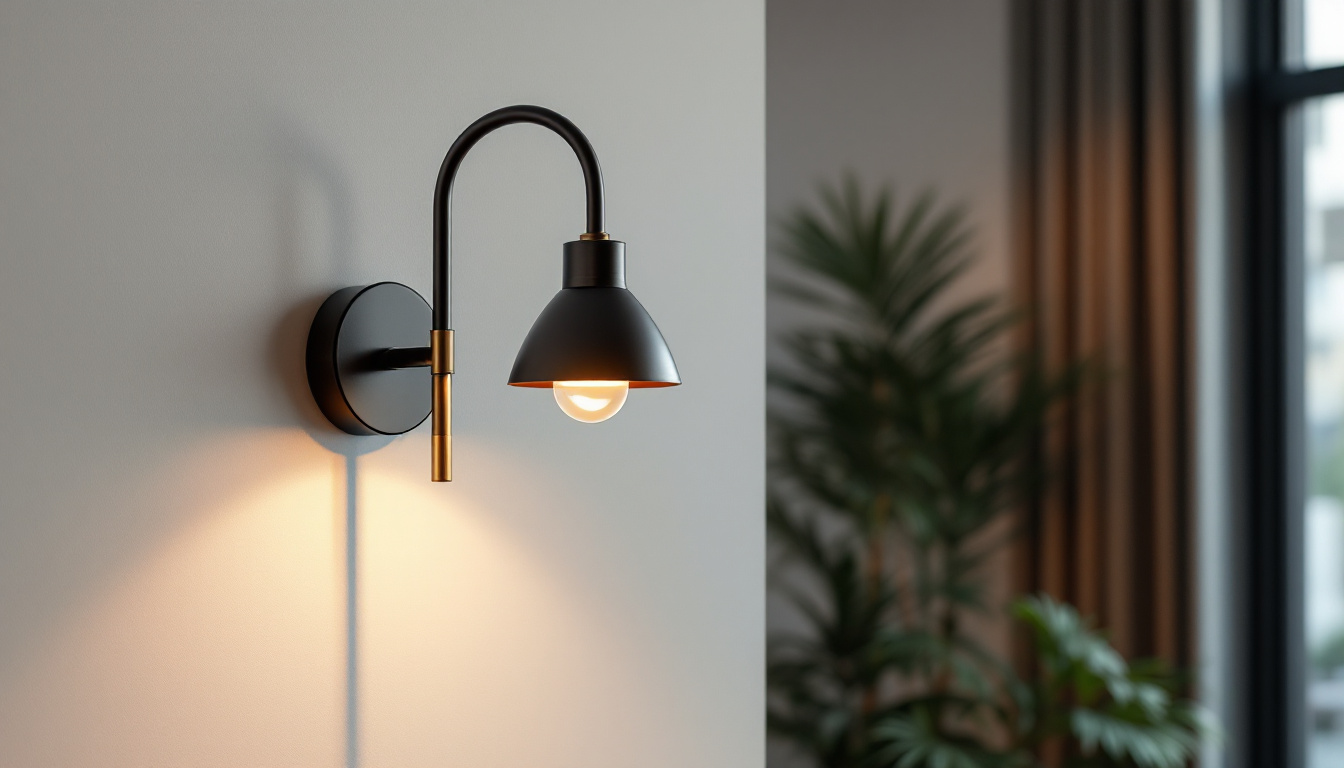
As a lighting contractor, understanding the various types of light switches is essential for ensuring that installations are not only functional but also meet the aesthetic and operational needs of clients. This comprehensive guide will delve into the different types of light switches available, their applications, and considerations for installation. By familiarizing yourself with these options, you can enhance your expertise and provide better service to your clients.
Light switches are devices that control the flow of electricity to lighting fixtures. They come in various designs and functionalities, catering to different lighting needs and preferences. The choice of light switch can significantly impact the overall ambiance of a space, as well as the energy efficiency of the lighting system. For instance, modern smart switches allow users to control their lighting remotely via smartphones or voice commands, adding a layer of convenience and sophistication to home lighting systems. Additionally, the aesthetic of a light switch can complement or clash with interior decor, making it an important element in home design.
At their core, light switches operate by interrupting or allowing the flow of electrical current. When a switch is in the “off” position, it breaks the circuit, stopping the flow of electricity. Conversely, when it is turned “on,” the circuit is completed, allowing electricity to reach the light fixture. Understanding this basic principle is crucial for troubleshooting and installation. Furthermore, different types of switches, such as toggle, rocker, or push-button, may have unique mechanisms that influence how they operate. For example, a dimmer switch not only turns lights on and off but also adjusts the brightness by varying the voltage supplied to the fixture, offering users more control over their lighting environment.
Familiarity with common terminology related to light switches can help contractors communicate effectively with clients and colleagues. Terms such as “single-pole,” “three-way,” and “dimmer” are frequently used in discussions about light switch types. Knowing these terms will facilitate clearer conversations and enhance your professional credibility. Additionally, understanding the differences between “load” and “line” wires is essential for proper installation, as it ensures that the switch is wired correctly to handle the electrical load without causing issues. As technology evolves, new terms like “smart switch” and “Zigbee” are becoming part of the lexicon, reflecting the shift towards more integrated and automated lighting solutions that enhance both functionality and user experience.
The market offers a diverse range of light switches, each designed for specific applications. Below are some of the most common types that every lighting contractor should know.
Single-pole switches are the most basic type of light switch. They control a single light fixture from one location. Typically, these switches have two terminals and are straightforward to install, making them a popular choice for residential applications. They are ideal for rooms with a single entrance, such as bedrooms and bathrooms.
Three-way switches allow control of a single light fixture from two different locations. This is particularly useful in larger spaces or hallways where multiple entry points exist. Installing three-way switches can be more complex than single-pole switches, as they require additional wiring. However, they significantly enhance convenience and accessibility.
For installations where control is needed from three or more locations, four-way switches are the solution. These switches work in conjunction with two three-way switches to allow for multiple control points. They are commonly used in large rooms or long hallways, providing flexibility and ease of use.
Beyond the standard types, there are several specialty light switches designed for specific functions or environments. Understanding these options can help contractors meet unique client needs.
Dimmers allow users to adjust the brightness of their lighting fixtures, creating customizable ambiance. They can be used with various types of bulbs, including incandescent, LED, and CFL. Dimmers are particularly popular in dining areas and living rooms, where mood lighting is essential. When installing dimmers, it’s important to ensure compatibility with the light fixtures and bulbs being used.
With the rise of smart home technology, smart switches have gained popularity. These switches can be controlled remotely via smartphones or voice-activated devices, offering convenience and energy efficiency. Smart switches often come with features such as scheduling and integration with home automation systems. When recommending smart switches to clients, consider their tech-savviness and specific needs.
Motion sensor switches automatically turn lights on or off based on movement detection. They are ideal for areas such as hallways, bathrooms, and garages, where hands-free operation is beneficial. These switches enhance energy efficiency by ensuring lights are only on when needed. Proper placement is crucial for optimal performance, so contractors should assess the layout of the space before installation.
When installing light switches, several factors must be taken into account to ensure safety, functionality, and aesthetics. Below are key considerations for lighting contractors.
Compliance with local electrical codes and regulations is paramount. These codes dictate how electrical installations should be carried out to ensure safety and reliability. Contractors should stay updated on relevant codes and ensure that all installations meet these standards. Failure to comply can lead to safety hazards and legal issues.
Before installing a light switch, it is essential to assess the existing wiring. Different types of switches may require specific wiring configurations. For instance, three-way switches need traveler wires in addition to the standard hot and neutral wires. Ensuring compatibility between the switch and the existing wiring is crucial for a successful installation.
The placement of light switches should prioritize accessibility and functionality. Switches should be installed at a height that is easy to reach and in locations that make sense for the layout of the room. Additionally, considering the flow of traffic in a space can help determine the best locations for switches, particularly in larger areas.
In an era where energy efficiency is increasingly important, selecting the right light switches can contribute to a more sustainable lighting system. Here are some ways that lighting contractors can promote energy-efficient solutions.
As LED lighting becomes more prevalent, ensuring that switches are compatible with LED technology is essential. Some older dimmer switches may not work effectively with LED bulbs, leading to flickering or reduced lifespan. Contractors should recommend LED-compatible switches to clients who are transitioning to LED lighting, enhancing both performance and energy savings.
Smart switches and controls can significantly improve energy management in homes and businesses. By allowing users to monitor and control their lighting usage remotely, these devices can help reduce energy waste. Educating clients on the benefits of smart lighting solutions can lead to more informed decisions and greater energy efficiency.
Incorporating occupancy sensors into lighting designs can further enhance energy efficiency. These sensors automatically turn lights off when a space is unoccupied, reducing unnecessary energy consumption. They are particularly effective in commercial settings, where lighting can often be left on in empty rooms. Promoting the use of occupancy sensors can help clients achieve their sustainability goals.
As design aesthetics continue to evolve, light switches are no longer just functional devices; they are also integral to the overall style of a space. Understanding current trends can help contractors make informed recommendations to clients.
Minimalism has become a popular trend in interior design, and light switches are no exception. Sleek, unobtrusive designs that blend seamlessly with walls are in high demand. Contractors should be familiar with various minimalist options, including touch-sensitive switches and those with hidden mechanisms, to cater to clients seeking a modern aesthetic.
Gone are the days of standard white switches. Today, light switches come in a variety of colors and finishes, allowing for greater customization. From matte black to brushed nickel, the options available can complement the overall design of a room. Contractors should encourage clients to consider how the switch’s color and finish can enhance their space.
The integration of smart technology into light switch design is a growing trend. Many modern switches feature touch screens or app connectivity, allowing for seamless control of lighting systems. Contractors should stay informed about new products and technologies to provide clients with the latest options in smart lighting solutions.
As the lighting industry continues to evolve, staying informed about the various types of light switches and their applications is crucial for lighting contractors. From basic single-pole switches to advanced smart controls, understanding these options allows contractors to meet the diverse needs of their clients effectively.
By considering factors such as installation requirements, energy efficiency, and design trends, contractors can enhance their service offerings and ensure client satisfaction. Ultimately, being knowledgeable about light switches not only improves the functionality of lighting systems but also contributes to the overall aesthetic and energy efficiency of spaces.
In a competitive market, the ability to provide informed recommendations and high-quality installations will set contractors apart. Embracing the latest technologies and trends will ensure that contractors remain at the forefront of the lighting industry, ready to meet the evolving needs of their clients.
Ready to take your lighting installations to the next level? Look no further than LumenWholesale for a vast array of top-quality, spec-grade light switches and lighting products. With unbeatable wholesale prices and no middleman markups, we ensure that you get the most reliable and high-performance lighting solutions for your clients. Plus, with the convenience of free shipping on bulk orders, you can enjoy premium lighting at the best value — without any hidden fees. Elevate your lighting projects by choosing Wholesale Lighting at the Best Value with LumenWholesale, where quality, affordability, and convenience come together seamlessly.

Discover the pivotal role exterior ceiling lamps play in the toolkit of lighting contractors.

Discover the top challenges for lighting contractors working on home lamp posts, gain expert insights, and learn solutions to improve project success—boost your expertise today!.

Discover how outside wall lights are revolutionizing the lighting industry, offering new opportunities and challenges for contractors.

Discover the key considerations for lighting contractors when selecting gooseneck wall sconces.